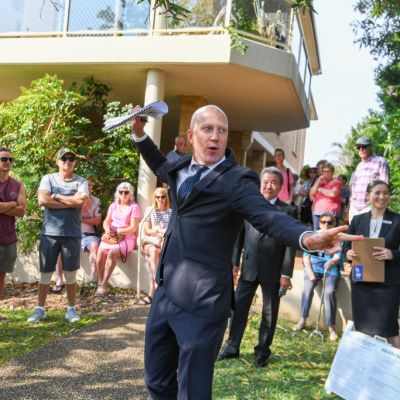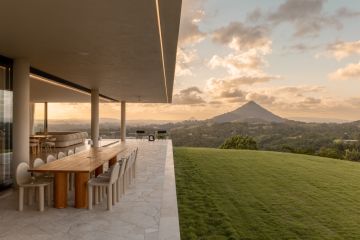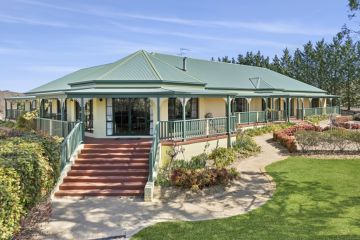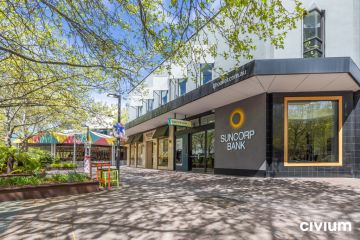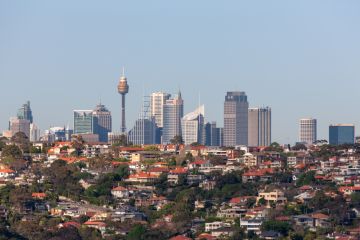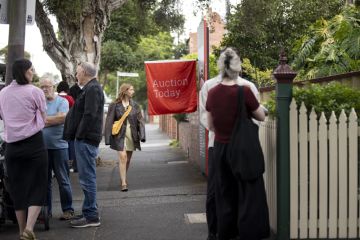The suburbs across Australia where houses are making more money than their owners
Homes in more than 80 suburbs and towns across Australia made more money in the past year than the people who own them, new figures show.
As property markets soared and wages growth remained low, housing prices in parts of the country rose by up to four times more than annual household incomes in the space of a year.
Suburbs in Sydney and Melbourne, where market rebounds are in full swing, dominated the list of 83 suburbs where annual property gains are higher than post-tax household incomes, according to an analysis of ABS and Domain data.
The affluent suburb of Canterbury in Melbourne’s inner east, where the median house price is$2,715,500, had the biggest earnings gap.
The median price was up 17.3 per cent annually, a rise of $400,500, while the average post-tax household income was $99,368 — meaning property gains beat the average household income by $301,132.
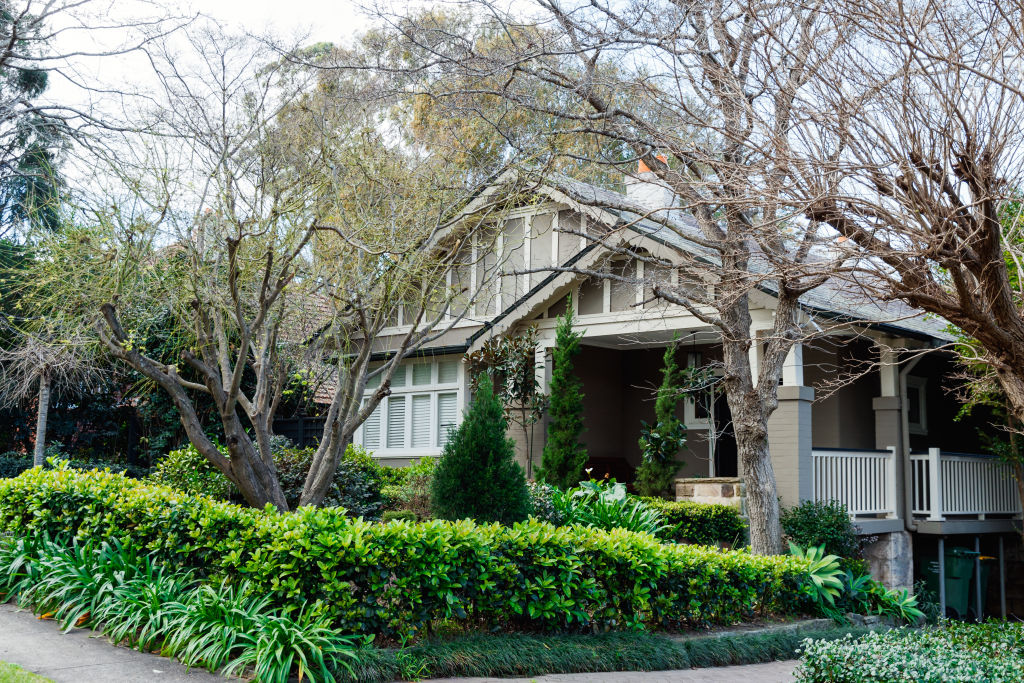
Lindfield on Sydney’s upper north shore and Paradise Point on the Gold Coast were next, with property price gains outstripping incomes by $198,471 and $179,757. They were among 14 suburbs in Victoria, NSW and Queensland, where property gains were at least $100,000 above incomes.
Price gaps across other states and territories were significantly lower, ranging from about $40,000 to less than $100.
“Most of these areas are higher-priced areas,” said Domain senior research analyst Nicola Powell. More than 60 per cent of these neighbourhoods are more expensive than the combined capital city median prices of $540,906 for units and $767,517 for houses.
“The national top 10 is driven by more expensive Sydney or Melbourne suburbs … it will be buyers that already have substantial equity [who are looking to get into those markets].”
| Source: Domain, ABS. | |||||
| Where house price growth is greater than household income | |||||
| Suburb | State | Median price, Dec qtr 2019 | Post-tax annual household income | Annual property growth to Dec $ | How much more homes earned |
| Canterbury | Victoria | $2,715,500 | $99,368 | $400,500 | $301,132 |
| Lindfield | New South Wales | $2,700,000 | $101,529 | $300,000 | $198,471 |
| Paradise Point | Queensland | $1,242,500 | $62,743 | $242,500 | $179,757 |
| St Kilda East | Victoria | $1,300,000 | $72,704 | $248,500 | $175,796 |
| Caulfield North | Victoria | $1,950,000 | $83,348 | $250,000 | $166,652 |
| Fig Tree Pocket | Queensland | $1,150,000 | $119,703 | $267,056 | $147,353 |
| Cammeray | New South Wales | $2,272,500 | $96,144 | $237,500 | $141,356 |
| Port Douglas | Queensland | $690,000 | $55,560 | $190,000 | $134,440 |
| North Bondi | New South Wales | $2,795,000 | $102,627 | $235,000 | $132,373 |
| Armadale | Victoria | $2,035,000 | $83,348 | $215,000 | $131,652 |
Dr Powell said the gap between property and income gains was only likely to widen, and spread across more suburbs, due to weak wage growth against a backdrop of rising property prices.
“[Poor wage growth] does place pressure on the RBA to cut interest rates … but that could spark further property price rises,” she said. “Your house could be earning much more than your household income if we continue to see prices move upwards.”
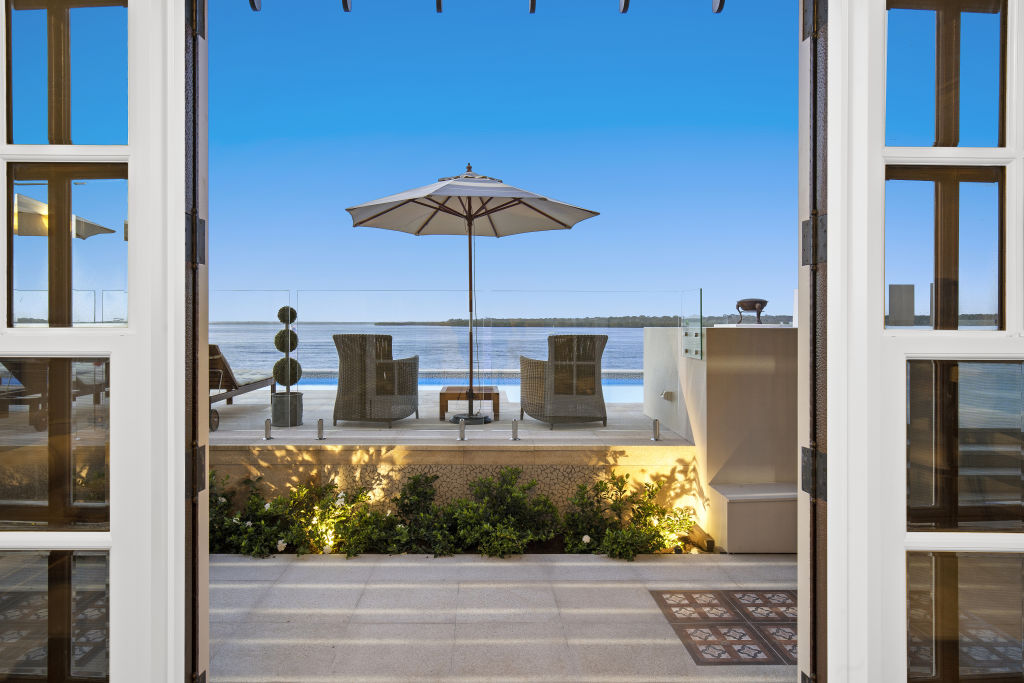
And it’s not just houses that are earning more, with unit price gains in 11 suburbs already outperforming annual incomes – by up to $82,956.
“We tend to see that houses do make greater capital growth long term,” Dr Powell said. “But I think what it highlights is [the gains that can come from] buying a unit in the right area.”
Rushcutters Bay in Sydney’s eastern suburbs had the biggest gap, followed by Balwyn in Melbourne’s inner east and Tweed Heads South on the NSW north coast – one of just two areas where the unit median was below the combined capital city median of $540,906.
Regional towns and suburbs also recorded strong growth, with 22 seeing property price gains pull ahead of incomes.
While some had seen very strong property price growth, they also tended to have lower incomes – particularly lifestyle areas popular with retirees, who often own their home outright.
“You’ve got areas that are lifestyle locations, such as the Sunshine Coast and Tweed Heads, where retirees are perhaps driving that. Or regional areas like Ballarat and Geelong where people are moving to get more for the money,” Dr Powell said.
| Source: Domain, ABS. | |||||
| Where unit price growth is greater than household income | |||||
| Suburb | State | Median price, Dec qtr 2019 | Post-tax annual household income | Annual property growth $ | How much more your home earned |
| Rushcutters Bay | New South Wales | $879,000 | $73,011 | $179,000 | $82,956 |
| Balwyn | Victoria | $802,500 | $73,558 | $175,000 | $78,087 |
| Tweed Heads South | New South Wales | $470,000 | $38,742 | $70,000 | $25,127 |
| Toorak | Victoria | $1,010,000 | $94,776 | $154,375 | $23,783 |
| Plympton | South Australia | $344,900 | $53,185 | $85,900 | $19,630 |
| Haymarket | New South Wales | $1,165,000 | $65,578 | $104,000 | $19,371 |
| Caulfield | Victoria | $700,000 | $76,299 | $112,000 | $10,736 |
| Glen Waverley | Victoria | $780,000 | $67,690 | $94,000 | $6,242 |
| Clayton | Victoria | $565,000 | $48,542 | $65,000 | $5,609 |
| Norwood | South Australia | $585,000 | $64,987 | $85,000 | $1,246 |
Dr Powell added the latter was creating a greater value gap in satellite cities and regions, with property prices pushed up by capital city workers — on higher incomes — relocating to more affordable regions from which they could commute.
More than a third of the suburbs were in Victoria, despite the state recording the strongest wage price growth, Dr Powell said. However, she noted, Melbourne has seen a stronger property rebound than Sydney, but wages remained lower.
NSW had a further 24 areas — 11 of which were outside Sydney — while half of the 18 Queensland areas were outside Brisbane. South Australia was next with six areas – with home values ahead by up to $19,630.
“Adelaide overall has had very subdued growth… it’s been a quiet achiever. But the top suburb [Plympton] has had 30 per cent growth, but it’s off such a low base,” Dr Powell said.
There were only two areas in Western Australia and Tasmania – which has seen rapid price growth, particularly in Hobart – and only one in both the Northern Territory and the ACT.
With median property prices only calculated for suburbs with a minimum of 50 sales over the year, Dr Powell said it was likely many more regions were seeing greater gains from property than incomes.
“In Hobart, you would expect there to be many suburbs where homes earn more than the household income. It has seen extraordinary price growth and has the lowest wage compared to other cities, but many suburbs are excluded because of research standards that we put in place,” Dr Powell said.
We recommend
We thought you might like
States
Capital Cities
Capital Cities - Rentals
Popular Areas
Allhomes
More

